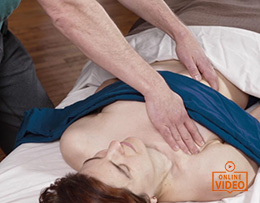4 Hour CE Course

As massage therapists, we spend a lot of time working on our clients’ backs. And yet because we are so focused on all the big, beautiful muscles that spread across the back, we often forget what is underneath–the ribs. These small bones, and the even smaller muscles that run in between them, are essential to nearly everything we do each day. They protect and support every breath we take, and they provide the foundation that enables every movement we make with our arms and our head. This is a neglected part of the body. It shouldn’t be.
In this course students will:


Take our free online course: Ethics Refresher
We will not rent/sell your email to anyone.
You'll also receive our newsletter and special offers.
Thank you! An email will be sent to the address provided with instructions on how to enroll in this 1 CE hour course - FREE!
If you do not see our email within a few minutes of signing up, please check your Spam/Junk folders it may have been delivered there instead of your inbox.
If, by chance, you still have not received it within 5 minutes, please call us at 1-800-364-5722, Monday-Friday, 9am-5pm EST for assistance.